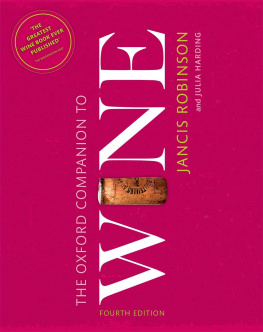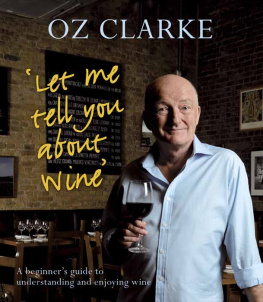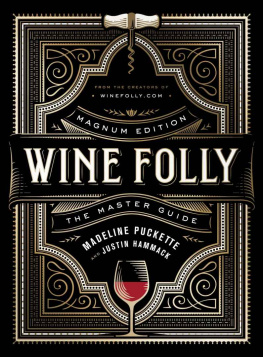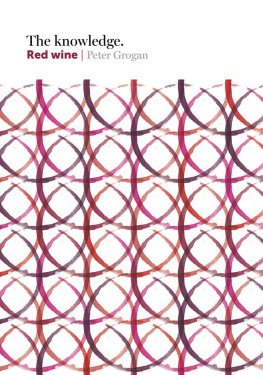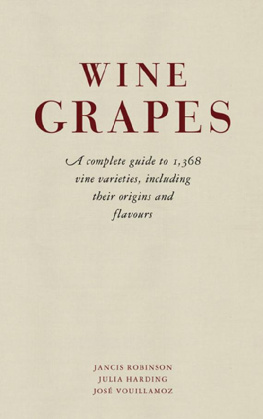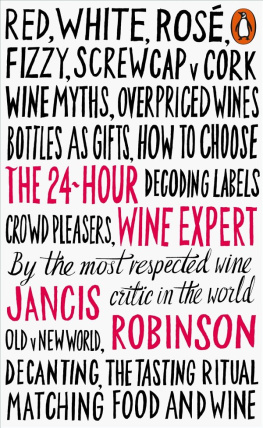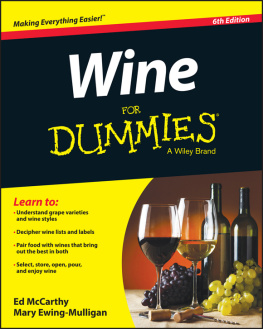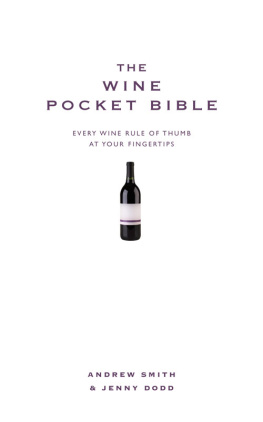While most e-readers can display special characters (such as and ), many cannot search for words containing them, unless the special characters themselves are typed into the search box. If you are unable to type these characters, please browse for your term using the .
The Oxford Companion to
Wine
Edited by Jancis Robinson
Fourth Edition
Assistant Editor: Julia Harding
Advisory Editor, Viticulture: Richard E. Smart
Advisory Editors, Oenology: Valrie Lavigne & Denis Dubourdieu


Great Clarendon Street, Oxford, OX2 6DP, United Kingdom
Oxford University Press is a department of the University of Oxford. It furthers the University's objective of excellence in research, scholarship, and education by publishing worldwide. Oxford is a registered trade mark of Oxford University Press in the UK and in certain other countries
Jancis Robinson and Oxford University Press 1994, 1999, 2006, 2015
The moral rights of the author have been asserted; Database right Oxford University Press (maker)
First published 1994
Second edition 1999
Third edition 2006
Fourth edition 2015
All rights reserved. No part of this publication may be reproduced, stored in a retrieval system, or transmitted, in any form or by any means, without the prior permission in writing of Oxford University Press, or as expressly permitted by law, by licence or under terms agreed with the appropriate reprographics rights organization. Enquiries concerning reproduction outside the scope of the above should be sent to the Rights Department, Oxford University Press, at the address above
You must not circulate this work in any other form and you must impose this same condition on any acquirer
Published in the United States of America by Oxford University Press 198 Madison Avenue, New York, NY 10016, United States of America
British Library Cataloguing in Publication Data
Data available
Library of Congress Control Number: 2015941385
ISBN 9780198705383
ebook ISBN 9780191016073
This revision is by far the most thorough there has ever been to The Oxford Companion to Wine. Every single entry has been subjected to intense scrutiny.
It is quite a responsibility to be in charge of a work that I know from personal experience occupies a very special place in the lives of wine lovers and wine students all over the world. Interest in wine, both its consumption and its production, has never been greater, which means that the world of wine has never been as extensive, nor as fast-changing. All of this means that it is very, very different from the wine world described in the third edition of this Companion, published in 2006.
The great majority of existing articles needed considerable revision, some of them benefited from recasting and some needed a complete rewrite. In addition to this meticulous operation, we have added 300 new entries, from Accolade and additives to Zametovka and Zelen (see on p. xix ). The fact that there was no entry in the third edition for terms such as minerality, Hong Kong, and CellarTracker demonstrates just how fast the wine world has been evolving. And of course it will continue to evolve. (Our references to the important wine-producing region Crimea had to be considerably revised in early 2014, for instance.) Frustratingly, the European wine authorities decided to change the entire structure of wine designations not long before we started work on our revisions, and many wine producers are still deciding how to react. For the moment two systems of nomenclature, both described in the Companion, can be found on the labels of wines produced in Europe, still by far the world's most important wine-growing continent. The word growing is significant. Throughout the wine world, the emphasis continues to shift from making to growing wine, just as we are seeing a step change in the style of wine to which thoughtful producers aspire. In terms of wine structure and alcohol levels, big is no longer as beautiful as it was at the end of the last century. And the range of grape varieties harnessed for serious commercial wine production is wider than it has been for decades. The scope of this Companion fully acknowledges all these trends.
Because the Companion was already very long and heavy (a common complaint which has inspired the publication of a digital version of this fourth edition), our esteemed publishers Oxford University Press were extremely strict with us about the total length of this new edition, which is less than 4% longer than the third edition in terms of the total number of words. This necessitated the deletion of a few of the more outdated entries but, more importantly, encouraged us to take a much more disciplined approach to existing entries than for any previous edition. Our intention has been to excise material that might be deemed incidental, marginal, or arguably otiose. Even so this fourth edition has a total of 4,104 entries, of which 315 are cross-references (there were 3,930 entries, of which 263 were cross-references, in the third edition). We are confident that this is the best edition of this work so far, although since there are far more and better-informed wine students around the world than ever before, we expect and welcome any suggested corrections and improvements via editorial@jancisrobinson.com.
An innovation for the online version of this fourth edition is an audible pronunciation guide, which is available for selected entries. Since so many languages and technical expressions are involved in wine vocabulary, we hope that my attempts at pronunciation are helpful. I have not tried to reproduce non-English terms exactly as they are pronounced in their native land; but have gone to some trouble to present an acceptable, lightly anglicized form.
I could not have even contemplated the necessary tasks without the exceptional vigilance and diligence of the Companions assistant editor Julia Harding MW. We have had to devote the best part of two years to revising the text and have as usual depended heavily on our advisory editors and an army of generous, knowledgeable contributorsall 187 of them, more than 50 newand contacts (see our ). All of this has been helped considerably by the OUP team. Rebecca Lane got the ball rolling. Our editor Cornelia Haase has offered us a delightful combination of charm and efficiency, and we are grateful to designer Elisabeth Heissler, production editor Bethan Lee, copy editor Marilyn Inglis, and proofreaders Bernadette Mohan and Michael Munro.
But I could not possibly have completed this edition had my husband Nicholas Lander not been such a patient, talented cook and tea-maker who has been remarkably tolerant of seeing his wife mainly in profile. I have not been much of a companion myself.

